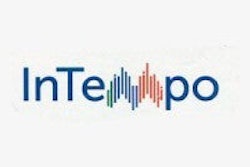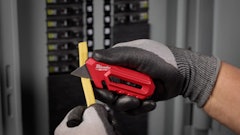Wouldn't it be great to find a gold mine buried beneath your rental business? Well, look no further because you're sitting on top of one right now. Not literally, of course, but in the form of data that can be mined from your operational system.
We talked with four leading software suppliers to the rental industry and asked them what benefits rental businesses could gain from "drilling down" into their data. Following is a question and answer roundtable with Nigel Miller, president and CEO of Texada Software Inc.; Jack Shea, CEO of Solutions by Computer; Bob Shaffer, president of Point-of-Rental Systems; and Michael Stilwagner, vice president of operations at Wynne Systems Inc.
Q: How can data be extracted from a rental company's management software to give it an edge over its competition?
A: Nigel Miller, Texada - The data collected in your operational system is a gold mine of information. When analyzed, it can provide you insight from the most basic analytics to the more complex ones. These analytics can confirm your assessments and provide deeper insight into your business.
Analytics can take the form of comparison of rentals or sales year over year. The competitive edge that a company doing analytics over another is they can predict and even modify the rental cycle by promoting or offering bundling to increase their revenue. You can track how much you are spending on repairs and reduce your overhead based on the analysis of your data. You can track your business in metrics not available before.
A: Jack Shea, SBC - With a good rental system, the possibilities are unlimited. You could gain insights into a customer type by cross-analyzing revenues with profitability, frequency or other criteria. You could identify your best customers and nurture them - or direct your sales efforts at finding more like them. Or you might discover that a surprising type of customer is renting reach forklifts, for example, and promote that category to others in that niche.
Data mining is also useful as a basis for making decisions on direct mail, Yellow Pages and other marketing expenditures. You could extract a report on demand for certain types of rentals by zip code, and invest in zoned newspaper advertising to target those areas. Using data this way can be especially useful to multi-location rental operations that want to decentralize and tap into local markets. To do this effectively, a system needs to be able to analyze customer transactions by branch.
Other types of data mined by rental businesses include inventory item revenue history, maintenance history and ROI; category-level maintenance costs and ROI; critical utilization or missed rentals; and sub-rent analysis to determine the financial value and customer service value of adding inventory.
A: Bob Shaffer, Point-of-Rental
Systems - There are over three hundred pre-programmed reports in Point-of-Rental Enterprise software. Some of these are specifically designed to increase revenue or decrease expenses. For example, Inactive Rental and Sale Items, Excessive Resale Inventory, Dollar/Time Utilization are all in our analysis reports. Other reports analyze depth of serialized inventory to determine if you have too many, too few or just the right number of units. There are also many trend analysis reports including one comparing income by category over different time intervals. Another useful evaluation tool for predicting anticipated revenue is the value of reservation contracts over comparable time periods. Other reports are designed to identify previously good customers who have dropped off the radar and still others identify your best customers for different rental items.
A: Michael Stilwagner, Wynne Systems - Prior to computerization, rates were figured on a fairly simple scale: You established a daily rate, then the weekly rate was a multiple of the daily rate, and the monthly rate was a multiple of the weekly rate. This made calculating the rental invoice on return very easy. With computers and the right software, the rates can be determined from your rental history. We can take the data and work out if you're achieving your daily rate. If you are, you can look to raise your rates. On the other hand, if you're looking at the weekly rate and realize you're achieving it only 60% of the time, lowering your weekly rate is an option, opposed to consistently discounting your equipment.
Reviewing your data to manage the exceptions is another great way to gain a competitive edge. When you're reviewing your data and 95% is exactly what you expected it to be, business intelligence tools are designed to expose that remaining 5% - extreme highs or lows in utilization, days sales outstanding (DSO), or trending longer than is typical. Your business intelligence tool should inform you of these exceptions, giving you time to manage them rather than seeing this trend on the 3rd of the following month in a month-end report.
Q: How can this information be extracted?
A: Shea - Data is extracted by making queries or requests that specify certain criteria. There are various types of tools available to facilitate the process of extracting and analyzing data. Report writers, such as Crystal Reports, are used by many Windows-based systems and don't require any programming expertise.
To use a report writer effectively, you must know where each type of data is stored in the database, such as customer name, address, type of business, transaction date, inventory identifiers, etc. Then, reports can be constructed to analyze financial performance, track trends, make comparisons, etc.
Another approach, requiring less expertise, uses a tool called OnLine Analytical Processing (OLAP). With OLAP, broad queries are constructed to pull data into the tool, where it is stored for future use. For example, a query might pull the key data from all transactions in a rental management database and place this data in a separate directory. Then, the OLAP tool is used to drag and drop the data types (customer, inventory, date range, etc.) into a report. These reporting tools all offer the options of data presentation in tabular or graphical form.
A: Shaffer - Any report in Point-of-Rental Enterprise can be exported into a variety of file types such as Adobe PDF, Excel, Word, HTML, and Comma Delimited. These reports can be exported with two clicks of the mouse.
A: Stilwagner - The information can be extracted with business intelligence (BI) tools of many types. It doesn't require a lot of computer know-how, but it does require a lot of business know-how. You can have a very powerful BI tool, but if you don't know what to look for, it might take years to roll out a comprehensive suite.
A: Miller - A software solution should provide easy access and easy-to-use products to enable your counter and managerial persons to make real-time, informed decisions for the operation. You need to roll up this information but have the key details to support it in your drill down reports. You might need to represent the same data in different ways for various departments within the organization to reflect the focus areas in question.
Q: What are your system's capabilities in terms of what data can be extracted?
A: Shaffer - Most of our reports are created using industry standard Crystal Reports. These reports can be printed, e-mailed or data from them exported to industry standard spread sheets such as Microsoft Excel. Other data can be extracted in various ways to report on an almost endless variety of subjects.
A: Stilwagner - Being on an open and popular database, there are hundreds of tools to extract data, from Excel to Access, to specialized BI tools. There's no limit, and you can extract everything. It's an open, IBM DB2 relational database.
A: Miller - Texada provides complete information access that enables our customers to run regular standard reports, create their own reports within production, and ad hoc or analytics where the results are can be extracted to other tools such as Microsoft Office. The Texada solution has a management dashboard that monitors key business metrics that allow drill downs into more detail and alerts key personnel if the metrics go beyond a custom threshold. The biggest benefit Texada provides is the ability to incorporate other data sources into your analytics to improve the rental business.
A: Shea - All of our systems allow users to extract the full range of transaction data about inventory, customers, activity periods and accounts receivable. Our Enfinity system is designed to use either a report writer or OLAP tool to formulate reports. Our CounterPro system uses the report writer approach.
Q: What is the future of computer software programs?
A: Stilwagner - Getting your information as quickly as possible to and from the main database is the direction software is going right now. Using hand-held equipment to record what's entering and departing the location, using telemetrics to gather information from the field for the equipment, as well as the service and transport vehicles. This also includes getting information from your suppliers' databases so that you can reduce your inventory by accurately costing and ordering replacement parts and eventually replacement fleet.
Wynne Systems is looking to address this with development of what is called RentalMan Fleet Tool, which will gather information about utilization, cost, age, ROI, etc. that follows policy to recommend fleet replacement and disposal. Additionally, having a maintenance software program on the service truck: Pushing and pulling information to the service vehicles about service history, parts availability and creation and completion of work orders. This information, up-to-date and at the fingertips of the users and key business personnel, is what will give rental companies a huge advantage.
A: Miller - Computer software needs to be designed to be more open to operate with other packages. Software functionality needs to deploy technology to drive real benefits and not technology for the sake of technology.
A: Shea - Integration is a trend that crosses over different markets and industries. I expect that will continue for the foreseeable future. In the rental industry, this relates to integrating rental software applications with third party applications - GPS, CAD design, truck routing, retail sales processing, CRM management - any function that supports the mission-critical nature of the rental business.
Another trend is the integration of wireless communications with computers, often referred to as telematics. The automotive industry has adopted telematics ahead of consumer demand for things like remote airbag deployment alarms and remote lockdown. Currently, in the equipment rental industry, demand is being driven by GPS applications like remote diagnostics and theft control, but it is a slow evolution.
A third direction in computer software development is the extension of the relationship between a business and its customers. Our Enfinity system offers eReports, a value-added service that a rental store can offer to its customers; eReports allows the end renter to view account activity 24 hours a day over the Internet. Developers are paying a lot of attention to customer relationship-building as a competitive advantage. Going forward, I believe we'll see computers address this in increasingly innovative ways.
A: Shaffer - Software will have tighter integration with GPS and RFID to track assets. There will be more B2B integration for purchasing from vendors. Already, controlled web-based access to the store's rental management system is being used by larger account customers to view their reservations, contracts, statements and real-time account status.
Q: How can rental businesses benefit from this evolution?
A: Shea - As the saying goes, 'information is power.' A rental management system automatically captures important information detailing every transaction you perform on a daily basis. Everything that has a financial impact on a rental business is stored in its rental management system database.
How you choose to focus on the information depends on your particular business model and operating approach. Every rental management system includes reporting - individual rental operators must decide for themselves how to best use that reporting. One thing is certain: national rental companies spend millions of dollars to analyze their business data, and independent operators should be doing the same.
A: Shaffer - Value-added features that reduce the time spent transferring or communicating data from one system to another will benefit everyone. Efficiencies gained through operational enhancements offer Point-of-Rental Systems' customers cutting-edge features to help them gain competitive market share.
A: Miller - The more open and extensible software becomes; the lower the total cost of ownership will be and productivity will improve. Rental businesses can then focus on driving value in their company and ultimately becoming more profitable.




















